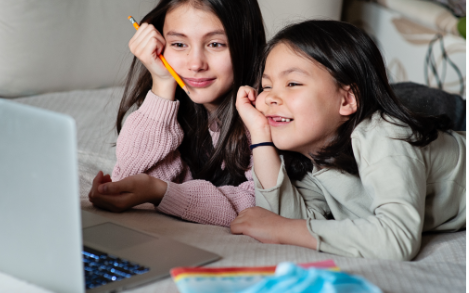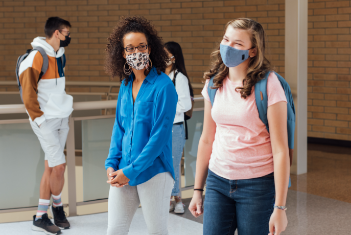Is Your Child Struggling Emotionally? You’re Not Alone.
Coronavirus Resource Center > Vaccine Overview > Articles & Resources
COVID-19 has been challenging for us all, impacting everyone in different ways. For many parents and guardians, this includes dealing with the negative impact on their child’s (or children’s) social, emotional and mental well-being.
Without having fully developed the life coping skills needed to adjust, the pandemic has asked our children to:
- Handle significant changes in their lives, along with
- Anxiety, stress and fear that comes with them, an
- Over a longer period than anyone could’ve imagined.
That’s a tall order for an adult, let alone a child.
If you’re a parent of a toddler, teen or young adult struggling with mental health issues, it’s important to know you’re not alone. And neither are they.

As early as April 2020, a national survey of 3,300 high school students found nearly a third reporting they were unhappy and depressed “much more than usual.” 1 By June 2020, the American Public Health Association had already expected a “tsunami of need coming” for supporting children’s mental health.2
Isolation a major factor
There are many reasons for the increased rates of depression and anxiety among children during the COVID-19 pandemic. Some of them include lack of structure, loss of security, changes in routine and disruption in learning.
But the one contributing factor that’s proving to be the most troublesome for children, especially those between 12 and 19 years of age, is the social isolation caused by lockdowns, sudden quarantines and remote learning. Adolescence is a crucial period of growth in social learning, now thought to be as essential as the cognitive growth in toddlers.3
Social isolation can stunt this critical stage of development, increasing depression and anxiety and have lasting effects on children. According to one study, social isolation increased the risk of depression up to 9 years later.4
With all these contributing factors weighing on our kids, it’s easy to see why mental health conditions like depression, anxiety, grief and substance use have grown during the pandemic. Or why they’ve intensified in children who were already struggling before COVID.
There is hope
As more and more people get their COVID vaccine shot, the nation moves ever closer to the target vaccination rates needed to leave this pandemic behind us. Eventually, that means more social activities and group interactions for our children. It means getting back to routines and having more structure. It means more engagement with others to help our kids combat the effects of social isolation and loneliness.
As the nation continues its efforts to get more and more people vaccinated, including children as young as 5, there are things parents can do now to help support their child’s mental and emotional well-being.

Don’t wait to offer help
The CDC also offers recommendations on how to help support your child’s mental health during the pandemic. Some of them include:
- Help your child stay socially connected. Help them or have them regularly reach out to family and friends via phone or video chats.
- Teach and reinforce preventive actions. Help your child have some sense of control and safety. Encourage them to wear their mask, wash their hands and stay at least 6 feet apart from others.
- Reassure your child that it’s okay to feel upset. Help them learn how to cope by sharing how you handle stress and anxiety yourself.
- Limit your child’s exposure to news coverage about the pandemic, including social media. They may not understand what they hear or misinterpret it, creating more fear and stress.
- Answer questions and share the facts. Give your child accurate information in a way they can easily understand.
- Try to establish and maintain a new routine. While COVID-19 has upended most of your child’s regular ones, try to keep a schedule for learning, relaxing and fun activities.
- Be a role model. More is caught than taught—if you deal with the pandemic calmly and confidently, your child is more likely to do the same.
If you’re a CareFirst member, you can also access a wealth of resources and healthcare providers by visiting our website.
Sources:
1 “Margolius, M., Doyle Lynch, A., Pufall Jones, E. & Hynes, M. (2020). The State of Young People during COVID-19: Findings from a nationally representative survey of high school youth. Americas Promise Alliance.
2 “The Tsunami of Need is Coming: Integrated Care in the Era of COVID-19.” June 25, 2020. The Tsunami of Need is Coming: Integrated Care in the Era of COVID-19 (apha.org)
3 “Children’s Mental Health Emergencies Skyrocketed After COVID-19 Hit. What Schools Can Do,” November 12, 2020. www.edweek.org.
4Loades, Maria Elizabeth et al. “Rapid Systematic Review: The Impact of Social Isolation and Loneliness on the Mental Health of Children and Adolescents in the Context of COVID-19.” Journal of the American Academy of Child and Adolescent Psychiatry vol. 59,11 (2020): 1218-1239.e3. doi:10.1016/j.jaac.2020.05.009